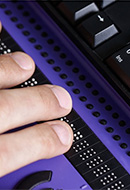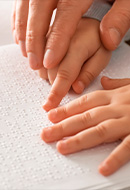What is Plain Language?
The power of Plain Language: how we facilitate communication with our audiences
Organisations are increasingly concerned about communicating with their audiences, which are becoming more diverse and demanding in terms of clarity and transparency. Adopting a plain language strategy has become a necessary way to achieve this. Find out, with Iberdrola, all about what plain language is and how we have incorporated it for a closer engagement with our customers.
How many times have we come across convoluted, obscure texts, with small print that makes us suspicious and with multiple words that we do not know? Whether in procedures with public administrations or in contracts with companies providing services, we could make a long list. Faced with this type of content, plain language emerged as a citizen's demand for their right to understand. Both in the legal sphere and in the defence of consumer rights, this wave started in the United States and the United Kingdom and has gradually spread.
Plain language may make us think that it is about writing in a simple and straightforward way, even far from the purpose of the original content. On the contrary, this writing method focuses on meeting the needs of the reader and putting the content at the service of the reader. As defined by the International Federation for Plain Language, a document has these characteristics when its wording, structure and layout are so transparent that the intended readers can find what they need, understand what they find and use that information. Finding, understanding and using refer to a practical and effective method of communication. Its essential application is in areas such as the legal, administrative, economic and scientific fields.
In this way, plain language gives priority to a message with a logical and coherent structure, focused on precise content without digressions or excessive technicalities. In conclusion, a format that is more accessible to all citizens who are not familiar with and do not usually deal with specialised languages.
What is plain language?
Plain language is a practical method of communication that puts the interlocutor at the centre. Messages that follow their guidelines and recommendations are aimed at meeting their information needs. Therefore, the content has to be relevant to meet their expectations.
The plain language guidelines have been progressively formalised, culminating in a voluntary technical norm or standard. This document is important as it responds to an agreement of specialists and professionals dedicated to this form of writing. The international standard ISO 24495:2023 - Part 1 includes a series of guidelines organised into 4 aspects − necessary information, easy to find, easy to understand and easy to use. It is thus consistent with its definition.
Among the most relevant guidelines, the following can be highlighted:
-
On structure: selecting the information the reader expects and needs and organising the content into paragraphs in a way that makes logical sense.
-
On sentences: use simple, ordered sentences, avoiding less direct forms such as passive voice or negatives.
-
On vocabulary: use commonly used but precise words and limit the use of technical terms to the minimum necessary and contextualised.
-
On tone: close and clarifying, to avoid a sense of concealment.
-
On design: use it to organise content, prioritise and reinforce understanding.
-
About the typography: legible and of an appropriate size. Paragraphs should also be aligned to the left.
-
On images: use them only if they add content and reinforce understanding, never as ornamentation. Use simple tables and graphs to present data.
-
On the complementarity of formats: consider web usability recommendations and facilitation with audiovisual resources.

Web accessibility
There are barriers on the Internet that affect millions of people.

Signography without barriers: Braille
Find out what braille is and how it works.

Digital Inclusion
The objective of digital inclusion is to reduce digital divide as much as possible.
We are committed to Plain Language
At Iberdrola, we are aware that our business has aspects that are difficult to understand. For example, something as simple to us as the difference between distributor and marketer or that the unit of measurement for energy is the kilowatt hour is complicated for our customers to understand.
Our monitoring through consumer surveys and analysis repeatedly indicated that there was still a long way to go when it comes to content. In electricity service, for example, lack of clarity is the second most common reason for household dissatisfaction. We knew we had an opportunity to improve this perception in communications.
That's why we are committed to being ever closer and more transparent. To achieve this, we are implementing plain language to ensure that our messages are easy to understand, to continuously improve our communications and to satisfy all the people who matter to us − customers, employees and suppliers.
How do we apply Plain Language?
We have been working for years to improve the way we communicate, incorporating the knowledge of Plain Language into our advertisements for the benefit of those who receive them.
United Kingdom (Scottish Power)
A few years ago, the ScottishPower External link, opens in new window. Legal and Marketing teams worked together to update our Standard Customer Terms & Conditions so that we were accredited with the Plain English Campaign’s Crystal Mark for their clarity. Since then, several of the ScottishPower Marketing team have been taking the Plain English training courses for web and direct communications that they run. We have developed a style guide that is used across all our communications. It seeks to ensure consistency across our communications and uses the Plain English best practice, such as that acronyms are only used where universally understood. Later this year we will be sending key customer communications to Plain English to obtain Crystal Mark accreditation for them too.
External link, opens in new window. Legal and Marketing teams worked together to update our Standard Customer Terms & Conditions so that we were accredited with the Plain English Campaign’s Crystal Mark for their clarity. Since then, several of the ScottishPower Marketing team have been taking the Plain English training courses for web and direct communications that they run. We have developed a style guide that is used across all our communications. It seeks to ensure consistency across our communications and uses the Plain English best practice, such as that acronyms are only used where universally understood. Later this year we will be sending key customer communications to Plain English to obtain Crystal Mark accreditation for them too.
In addition, we are now partnering with Plain Numbers along the same lines as Plain English. They seek to make ‘number heavy’ communications more easily understood. Again, this involves training for our staff and by the summer we will have 4 Plain Numbers certified practitioners in the team and will also look to have the Plain Numbers accreditation on our customer bills and other communications.
Iberdrola España
At Iberdrola España External link, opens in new window. , we have been improving communication with our customers for several years based on plain language guidelines. On the one hand, Iberdrola Clientes España adapted the designs of bills and contracts to make them more visual and simple. Furthermore, a Plain Language Guidelines Guide is available to guide all the company's departments in the preparation of their documents. Similarly, our distributor i-DE has a Style Guide for writing letters, e-mails and SMS to its customers.
External link, opens in new window. , we have been improving communication with our customers for several years based on plain language guidelines. On the one hand, Iberdrola Clientes España adapted the designs of bills and contracts to make them more visual and simple. Furthermore, a Plain Language Guidelines Guide is available to guide all the company's departments in the preparation of their documents. Similarly, our distributor i-DE has a Style Guide for writing letters, e-mails and SMS to its customers.
With all this background, in 2022 we launched the Iberdrola Plain Language project.
The project covers two areas. The first is theoretical, where we have an Iberdrola Plain Language Guide for Iberdrola employees that explains in detail its drafting and design guidelines. The second is practical, where we have organised training workshops to develop real plain language documents that are available for application. To date, we have a repository of over 20 adapted documents in areas as diverse as People and Organisation, Management Development, Claims, Procurement, and Regulation.
Global Plain Language project for the entire Iberdrola Group
The goal of this project is for Iberdrola's communications in all countries in which it operates to progressively apply the best practices of plain language. To achieve this, we have created a methodology that includes and expands on the recommendations of ISO 24495-1:2023 Plain Language.
A seal that guarantees plain language
At Iberdrola, we have taken an additional leap forward because our commitment goes beyond applying plain language. For this reason, we have supported the development of AENOR Plain Language Seal and have submitted our methodology and various documents to the certification process. In this way, we reaffirm our will to continuously improve the clarity of our communications. The documents that include this seal have passed the following process:
-
Our editors have applied the best practices collected in the Iberdrola Plain Language Guide to this communication.
-
A group of clients has reviewed the communication to check that it is understandable and functional.
-
A certifying entity of recognised prestige, in our case AENOR, verifies that the communications comply with the requirements of plain language.
This way, our customers will be able to recognise these communications and our commitment. The positive impact of this cultural change is summarised in this infographic:
The positive impact of Plain Language in our communications
-
Increased customer satisfaction by reducing the perception of lack of transparency towards customers.
-
Potential financial savings by reducing queries, complaints and enquiries from customers and other stakeholders.
-
We show Iberdrola's commitment to social inclusion.
-
Increased efficiency and better process results, as readers save reading time and the risk of misunderstandings due to inaccurate or incorrect communication is reduced.





